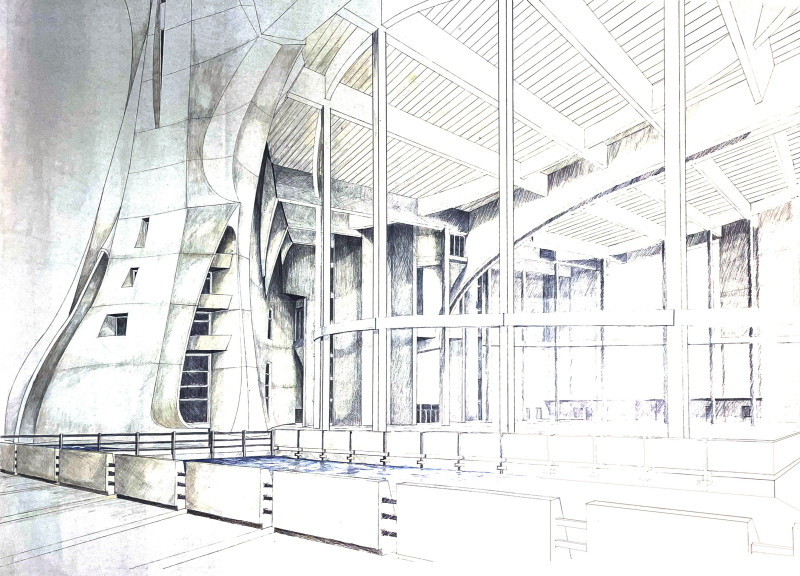5 key facts about this project
The pavilion’s primary function is to act as a multifunctional space, accommodating various activities such as community events, art exhibitions, and informal gatherings. This adaptability is central to its design ethos, ensuring that it meets the evolving needs of the community it serves. The architectural design prioritizes inclusivity, encouraging visitors to make use of the space for diverse purposes throughout the year.
The design approach of the Innovative Urban Pavilion is characterized by an organic form that breaks away from conventional architectural styles. This fluid shape is intentionally reminiscent of natural landscapes, creating a harmonious dialogue between the pavilion and its surroundings. By avoiding rigid lines and traditional geometries, the architect has crafted a structure that feels more inviting and approachable, inviting users to interact with both the building and each other.
Material selection plays a critical role in the pavilion’s architecture. The structure incorporates reinforced concrete, which provides necessary stability while affording the flexibility to achieve the desired curvilinear forms. The use of low-emissivity double-glazed glass for the pavilion’s facade further enhances its connection to the environment, allowing natural light to permeate the interior while maintaining thermal efficiency. Treated wood is employed in the decking and seating areas, ensuring a warm and inviting atmosphere, while aluminum composite panels contribute a modern touch that balances the organic forms with sleek detailing. The inclusion of green roof systems signifies a commitment to sustainability, promoting biodiversity and mitigating urban heat, while also enhancing the overall aesthetic of the pavilion.
Notably, the design incorporates interactive elements that encourage visitor participation and engagement with the surrounding community. Digital displays and art installations are integrated within the space, creating opportunities for local artists to showcase their work in a dynamic and flexible environment. This aspect of the design invites dialogue between art and architecture, breaking down barriers to access and inspiring creativity among users.
The Innovative Urban Pavilion distinguishes itself through its biophilic design principles, seamlessly integrating greenery both within the pavilion and on its external surfaces. This thoughtful incorporation of nature not only enhances the visual appeal but also supports the well-being of its users, providing them with a respite from the urban environment while promoting a sense of tranquility.
In summary, the Innovative Urban Pavilion is an engaging architectural project that encapsulates the principles of community involvement, sustainability, and aesthetic integration. Its unique design approach reflects a deep understanding of urban dynamics and the necessity for spaces that facilitate social interaction. Readers are encouraged to explore the project presentation further to gain a deeper understanding of the architectural plans, sections, designs, and ideas that shape this remarkable space.























